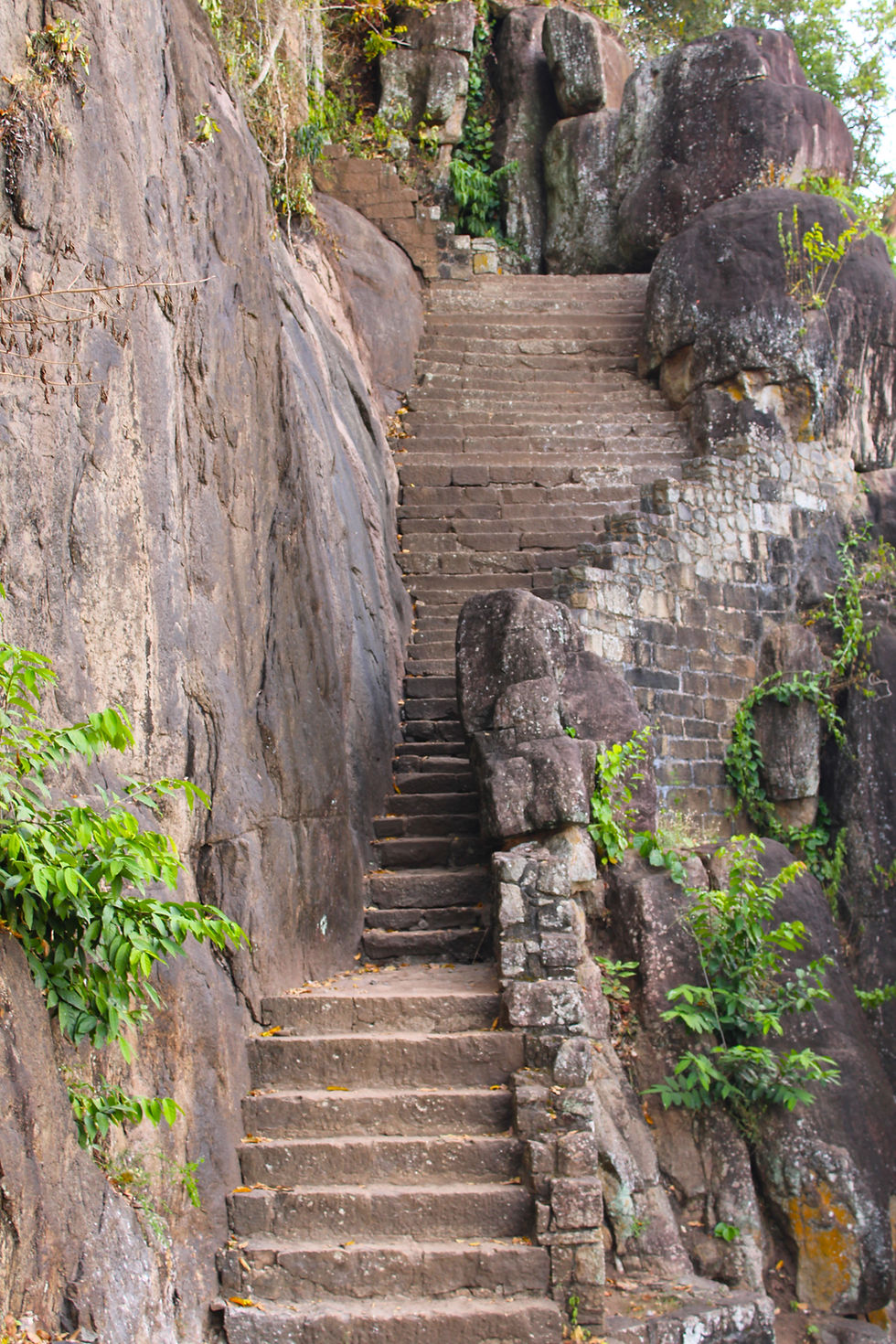Dambadeniya kingdom Srilanka
- sajith dhanapala
- Aug 29
- 2 min read
Updated: Sep 6

After the invasion of the South Indian conqueror Kalinga Maaga in Polonnaruwa, local leaders and villagers fled to safer areas. They sought refuge on rocky terrain that would be difficult for the invaders to access.
Consequently, the provincial leaders chose the "Dambadeniya Balumgala" rock as the site for their next kingdom in Sri Lanka. Located in the North Western Province, specifically in the Kurunegala District along the Colombo-Kurunegala highway, it’s just a two-hour drive from Colombo Airport and rises to about 450 feet.

In the wake of the Maaga invasions, the people of Sri Lanka grew weary of the brutal governance enforced by Kalinga Maaga, who killed villagers, enslaved many, murdered Buddhist monks, and desecrated temples along with invaluable texts. In response, local leaders rallied the villagers to take a stand against the oppressors.
Among these courageous leaders was the notable 3rd Wijayabahu, who constructed his palace atop Balumgala rock. He also built a temple to house the sacred tooth relic of Lord Buddha.
Following the reign of King 3rd Wijayabahu, his son ascended the throne as 2nd Parakramabahu. He fought valiantly against the invaders, successfully driving them out of Sri Lanka. In addition to his military achievements, he is celebrated for his significant contributions to Sinhala literature, safeguarding and composing many revered works.
Atop Balumgala rock, remnants of a once-thriving kingdom can be found, including halls, private residences, caves, and ponds. A carved staircase leads visitors up the rock, making the ascent manageable. From the summit, breathtaking landscapes unfold below.


Additionally, an ancient temple stands at the site, where the tooth relic of Lord Buddha is securely kept, adorned with exquisite paintings that enhance its sacred ambiance.
High up in the rocky terrain, three ponds have been identified thus far, believed to serve as vital water sources for the kingdom's inhabitants and later for the monks who settled in the area. Remarkably, the water in these ponds remains abundant, even during dry seasons when resources are typically scarce.







Comments